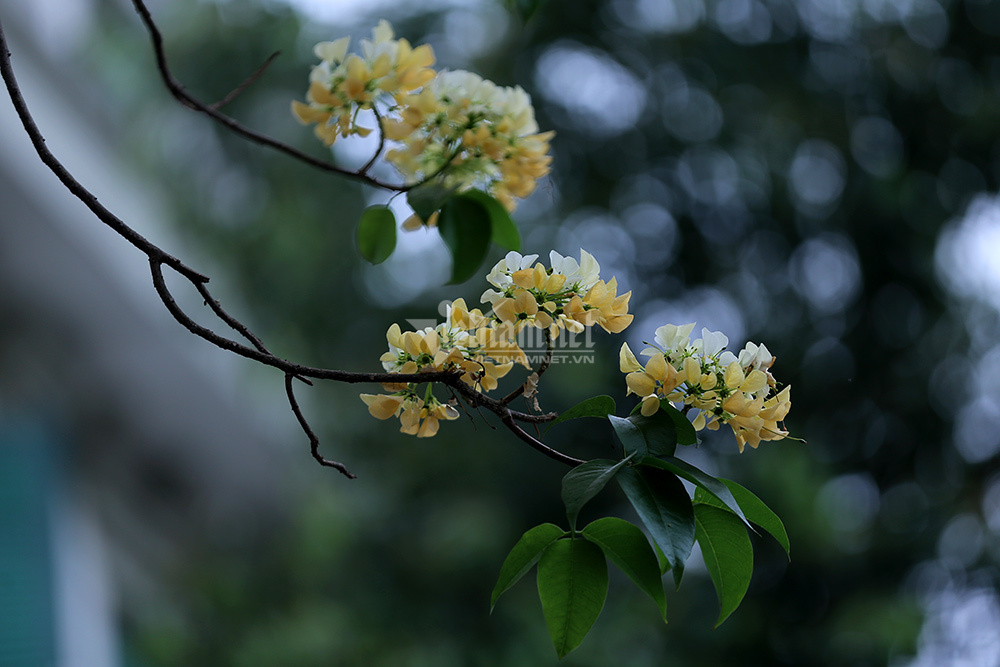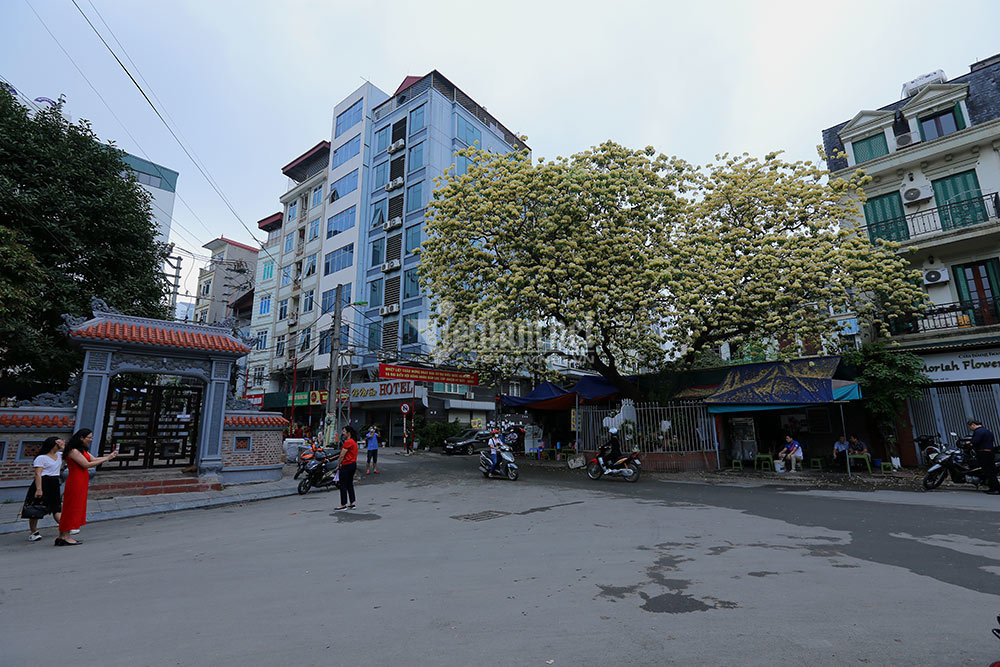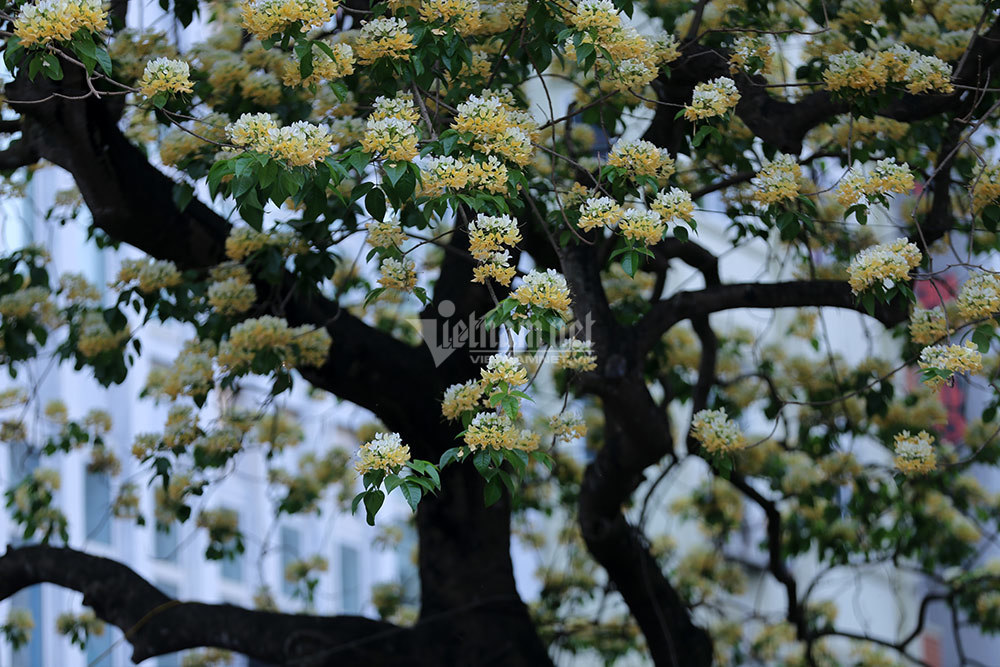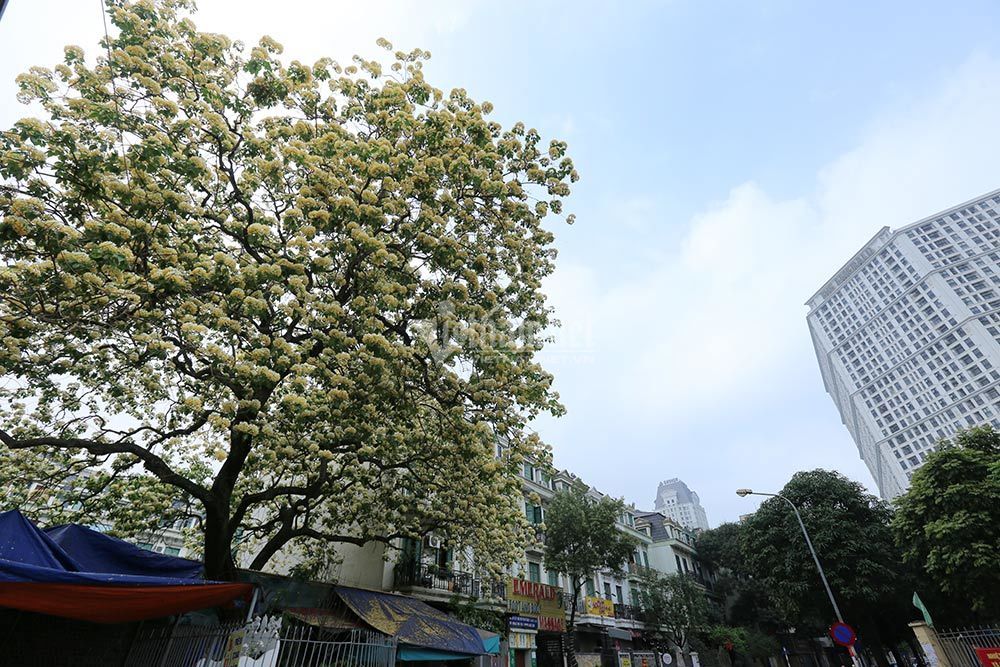
A corner of Hanoi has been graced by the dazzling sight of an old spider tree in full bloom.
A corner of Hanoi has been graced by the dazzling sight of an old spider tree in full bloom.
People in many central provinces (Quang Nam, Ninh Thuan, Thua Thien – Hue…) are no stranger to this tree, but this is not the case with Hanoians, as spider trees are rarely planted in the North. Every April when its flower starts to bloom is a time for public contemplation.
 |
| The tree (also known as Capparaceae) located on Dinh Thon Street in Nam Tu Liem District, Hanoi, is exquisitely shining with its seasonal beauty. |
 |
| The tree occasionally flowers around April - June, depending on the varying climate. The blossoms cluster at the end of the branch, and are milky white or sometimes yellow-orange. |
 |
| Spider trees are native to Japan and Australia, and widely distributed in Asian countries such as China (especially in Guangdong, Hainan), Bhutan, Cambodia, India, Myanmar, Nepal, The Philippines, Sri Lanka, Thailand, Vietnam and a few of the South Pacific islands. |
 |
| In moist soil with thick layers and high fertility, flowers bloom when the plant is leafy, forming white patches on a verdant canopy. The arid and nutrient-poor land, by contrast, causes the trees to flower later when their branches have turned leafless, creating a full milky-white dome with some yellowish-orange spots. |
 |
 |
| In moist soil with thick layers and high fertility, flowers bloom when the plant is leafy, forming white patches on a verdant canopy. The arid and nutrient-poor land, by contrast, causes the trees to flower later when their branches have turned leafless, creating a full milky-white dome with some yellowish-orange spots. |
 |
(Source: VNN)





